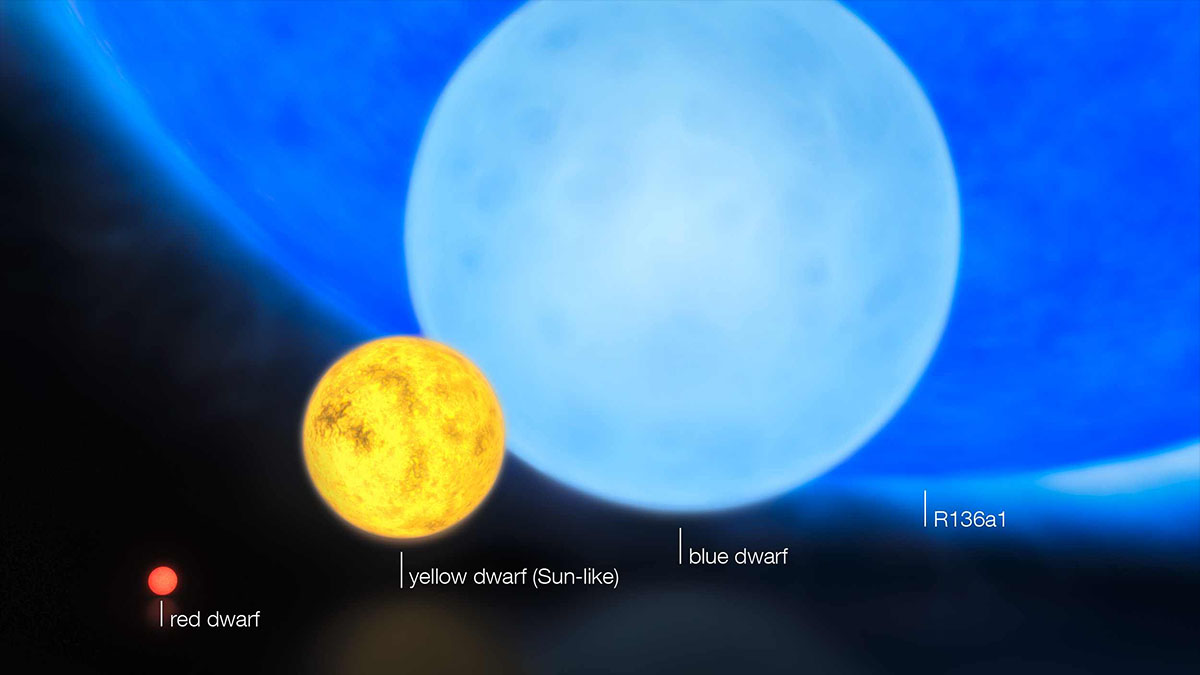the biggest stars in the cosmos, revisited

Last week, astronomers unveiled a stellar titan known as R136a1, a burning ball of plasma so massive and bright that its existence was only theoretical until it was actually spotted by telescopes. Not only does it tip the scales at roughly 265 solar masses, 32% more than even the hypothetical progenitor of SN2007bi, it’s also more than 10 million times more luminous than the Sun. Because it’s so incredibly massive, R136a1 burns through its hydrogen fuel faster than a cargo ship would go through a tank of gas, and the photons deep in its scorching innards will soon start decaying into self-annihilating matter/antimatter pairs. As the huge star will contract because those matter/antimatter reactions won’t provide enough pressure to counteract the forces of gravity, its core will heat up until it eventually tears itself apart, blasting out plumes of of superheated gas and an intense shower of gamma rays powerful enough to break down escaping matter just enough for it to fall back towards the star’s dead core, which swallows itself into a massive black hole.
Not only is R136a1 proving that stars can greatly exceed the Eddignton luminosity limit of 120 solar masses, but showing that pair-instability supernovas can and do exist as supported by the aftermath of SN2007bi. If at some point in the near future we’ll see its death, we may also find out whether the scenario above, predicted for suns exceeding 250 solar masses, really works how we think, or if all pair-instability supernovae simply disintegrate because when their cores overheat they exceed the stars’ gravitational binding energy to such a degree that not even the subsequent gamma ray bombardment is enough to slow the blast and create a new black hole. But regardless of the mechanics of its collapse, R136a1 will seed its galaxy with materials which will clump to create new stars and planets, as well as the metals and the building blocks of complex organic molecules required for living things to emerge on future worlds. And yet, ironically, due to its short life and its violent radioactive emissions, it would be incredibly inhospitable to anything alive until its fiery death…





